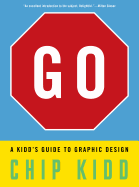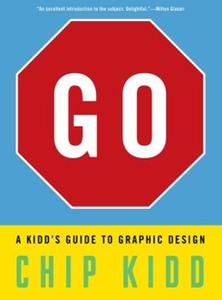

"Everything that is not made by nature is designed by someone." Kidd's statement introduces a spread of examples of a range of design decisions, from the shape and look of a container, to type sizes, to color coordination. He pictures a milk carton with a pattern resembling a Holstein cow ("drawing inspiration from nature"), then points out the tiny type that states its volume--also a design decision.
An eight-page "brief tour through the history of graphic design," connects images in a kind of flow chart of milestone events, beginning with the first visual forms of communication--the cave paintings at Lascaux, France (15,000-10,000 B.C.), and Egyptian hieroglyphics (3300 B.C.). Kidd also focuses on such inventions as the Gutenberg movable-type printing press in the 1450s and the resulting innovations with type (the Garamond font in 1530, the Helvetica font in 1957), the first photograph (by Joseph Nicéphore Niépce in 1826), the Coca-Cola logo (1886), the first Apple computer (1984)--which "started a revolution in how ordinary people interface with machines"--and many more. Kidd ends with "What will come next? Maybe your design?" and a box that reads, "Your work here."
He consistently makes readers a part of that continuum. He's congratulated them for opening the book (even though "the cover is weird and seemingly at cross-purposes with the message and possibly even a bit pretentious"). He constantly brings the narrative back to readers and gives them the tools to analyze their own experiences with design. Readers learn type terminology ("font," "kerning," "leading"), tricks of the trade (how to juxtapose big and small, things seen and unseen), plus color combinations and their effects (orange and blue tend to "vibrate" against each other; whereas red against black says, "Pay Attention," the goal of an EXIT sign), among many other crucial design ideas.
Although Kidd believes in the adage "Form follows function," he teaches about form first, then follows with how to express content through graphic elements. He proves through examples that design does not rely only on aesthetics but rather on a thoughtful approach to the ideas to be conveyed and how best to express them visually.
Like a great ballerina, Chip Kidd marries form and function in a way that looks deceptively easy to achieve. Yet he's also an excellent teacher: he wants kids to understand the fundamentals so that, with practice, they, too, can become graphic designers. This book may well inspire a generation to follow in his footsteps. Kidd introduces readers to his vocation as a hidden world, then helps them unlock it. He hooks them with his enthusiasm and inspires them to test for themselves what they've learned with 10 possible projects at the end. At the very least, Kidd will get kids thinking--and that's the greatest gift a book can give. --Jennifer M. Brown
Shelf Talker: Chip Kidd delivers a graphic design guide that lifts the veil on a hidden world and gives kids the tools to navigate it for themselves.

